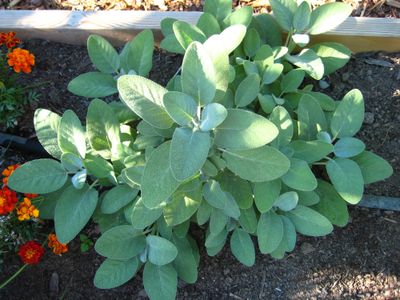Can’t they all get along?

Do the vegetables in your garden get along? Did you even know this is an important consideration?
Up until a few years ago, I’d heard of the pest-repelling qualities of some herbs but that’s all I knew about companion planting. There are many different types of plants that either thrive when planted together, or inhibit each other’s growth.
I learned this by reading “Carrots Love Tomatoes” by Louise Riotte (Storey Publishing, 220 pages, $14.95), a guide to companion planting that has become legendary in gardening circles ever since the first edition was printed in 1975.
As you can see by the information boxes to the left, it can get a little tricky sorting out which veggies play nice with each other and which ones should be kept apart. It might be fun to experiment with a few of these and see what happens in your garden.
Successful gardeners keep detailed records of the layout of their garden each year in order to rotate their crops. Why is this important? Some plant families are susceptible to certain insects and disease. Instead of growing crops within the same plant family in the same beds every year, move them around to thwart them.
I am especially interested in the pest-repelling qualities of herbs and think they are worth exploiting. Let’s take a look at ones that might be useful in your garden:
Members of the onion family (chives, garlic, leeks, onions and shallots) repel aphids, carrot flies, spider mites and a host of other insects. They even repel rabbits. Garlic sprays can control late blight in tomatoes and potatoes.
Marigolds repel aphids, Colorado potato beetles, tomato hornworms, bean beetles, cucumber beetles, asparagus beetles and whiteflies.
Rosemary, hyssop, oregano, thyme and sage repel cabbage butterflies. Mint does this as well, but because it is very invasive, plant it in a pot near cole crops like broccoli, Brussels sprouts, cabbage and cauliflower to keep it under control.
Basil repels tomato hornworms, flies and mosquitoes. In addition to providing splashes of color in the garden, nasturtiums repel squash bugs, striped pumpkin beetles and whiteflies. If you have a problem with aphids, nasturtiums are an attractant, which means they will lure aphids away from other target plants.
Beans can be planted near potatoes in order to repel Colorado potato beetles, and if you plant cucumbers near your corn, they can repel raccoons. And if your cucumbers or squash are being attacked by insects, try planting radishes among them.
It should be noted that everyone’s garden is different and the successes one gardener has might not be shared by another. The important thing is to be observant and conduct your own experiments with planting combinations.